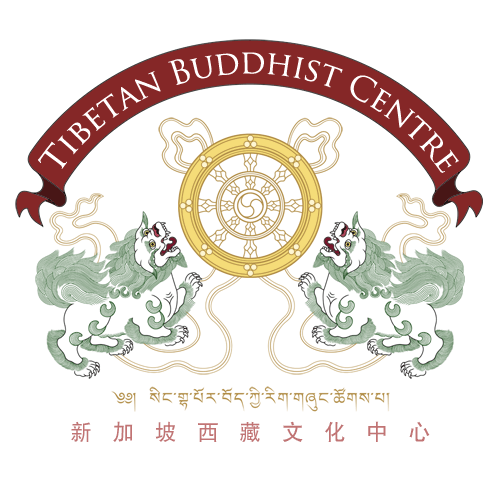The Gelugpa Lineage
The story of Gelugpa begins with Tsongkhapa (1357-1419), from Amdo Province of Tibet.
Gelugpa is best known in the West as the school of Tibetan Buddhism associated with His Holiness the Dalai Lama. In the 17th century, the Gelug school became the most powerful institution in Tibet, and it remained so until China took control of Tibet in the 1950s. The story of Gelugpa begins with Tsongkhapa (1357-1419), a man from Amdo Province who began studying with a local Sakya lama at a very young age.
Je Tsongkhapa’s Lam-Rim Chen-mo or The Great Treatise on the Stages of the Path is one of the most renowned Tibetan Buddhist classics. The work falls into the LamRim genre which stemmed from the Kadampa school of Tibetan Buddhism. Its main structure is based on the division of three levels of spiritual beings, which Atisha puts forth in The Lamp for the Path, and the three principles of the path.
Tsongkhapa did not study in any one place. He stayed in Kagyu monasteries learning Tibetan medicine, the practices of Mahamudra, and the tantra yoga of Atisha. He studied philosophy in Sakya monasteries. He sought independent teachers with fresh ideas. He was particularly interested in the Madhyamika teachings of Nagarjuna.
Through most of his adult life, Tsongkhapa traveled around Tibet, often living in camps with dozens of students. By the time Tsongkhapa had reached his 50s, the rugged lifestyle had taken a toll on his health. His admirers built him a new monastery on a mountain near Lhasa. The monastery was named "Ganden," which means "joyful."
The Founding of Gelugpa
At the time of his death, Tsongkhapa and his students were considered to be part of the Sakya school. Then his disciples stepped up and built a new school of Tibetan Buddhism on Tsongkhapa's teachings. They called the school "Gelug," which means "the virtuous tradition."
Here are some of Tsongkhapa's most prominent disciples:
Gyaltsab (1364-1431) is thought to have been first the abbot of Gendun after Tsongkhapa died. This made him the first Ganden Tripa, or throne-holder of Gendun. To this day the Ganden Tripa is the actual, official head of the Gelug school, not the Dalai Lama.
Jamchen Chojey (1355-1435) founded the great Sera monastery of Lhasa.
Khedrub (1385-1438) is credited with defending and promoting Tsongkhapa's teachings throughout Tibet. He also began the tradition of high lamas of Gelug wearing yellow hats, to distinguish them from Sakya lamas, who wore red hats.
Gendun Drupa (1391-1474) founded the great monasteries of Drepung and Tashillhunpo, and during his life he was among the most respected scholars in Tibet.
The Dalai Lama
A few years after Gendun Drupa died, a young boy of central Tibet was recognized as his tulku, or rebirth. Eventually this boy, Gendun Gyatso (1475-1542) would serve as abbot of Drepung, Tashillhunpo, and Sera.
Sonam Gyatso (1543-1588) was recognized as the rebirth of Gendun Gyatso. This tulku became the spiritual adviser to a Mongolian leader named Altan Khan. Altan Khan gave Gendun Gyatso the title "Dalai Lama," meaning "ocean of wisdom." Sonam Gyatso is considered to be the third Dalai Lama; his predecessors Gendun Drupa and Gendun Gyatso were named first and second Dalai Lama, posthumously.
These first Dalai Lamas had no political authority. It was Lobsang Gyatso, the "Great Fifth" Dalai Lama (1617-1682), who forged a fortuitous alliance with another Mongolian leader, Gushi Khan, who conquered Tibet. Gushi Khan made Lobsang Gyatso the political and spiritual leader of the entire Tibetan people.
Under the Great Fifth a large part of another school of Tibetan Buddhism, Jonang, was absorbed into Gelugpa. The Jonang influence added Kalachakra teachings to Gelugpa. The Great Fifth also initiated the building of Potala Palace in Lhasa, which became the seat of both spiritual and political authority in Tibet.
Today many people think the Dalai Lamas held absolute power in Tibet as "god kings," but that is inaccurate. The Dalai Lamas who came after the Great Fifth were, for one reason or another, mostly figureheads who held little real power. For long stretches of time various regents and military leaders were actually in charge.
Not until the 13th Dalai Lama, Thubten Gyatso (1876-1933), would another Dalai Lama function as a real head of government, and even he had limited authority to enact all the reforms he wished to bring to Tibet.
The current Dalai Lama is the 14th, His Holiness Tenzin Gyatso (born 1935).

